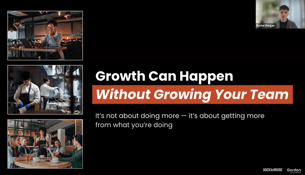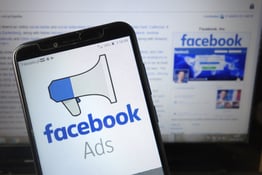Understanding who your customers are and what they want is crucial to your success. You probably know you should be collecting customer data, but do you know what you’re supposed to be doing with it once you’ve got it? Customer data collection for restaurants can be key to improving outreach, engagement, traffic, and sales.
Many restaurants simply aren’t making the most of their customer data, according to Abhinav Kapur, CEO and co-founder of Bikky, a leading restaurant customer relationship management (CRM) system.
“Restaurants have been collecting data for years, ever since online ordering has been around,” says Kapur. “Our philosophy is that restaurants just haven't been doing anything with it.”
Use Email To Boost Restaurant Profit With Data Collection
Bikky is a platform that consolidates customer data and helps restaurant operators put that data to use through targeted marketing campaigns and automatic reports. Kapur says that the most effective strategies are rooted in building better, stronger, and more direct relationships with your customers.
Kapur recommends direct email marketing as the best way to benefit from customer data collection. He offers these five tips for building effective restaurant email marketing campaigns.
1. Get Those Email Addresses
There are a lot of ways to get in touch with prospective and current customers, but according to Kapur, email remains one of the most powerful methods.
“You need to be building relationships with your guests, and [email] data is there to help you do that in a more targeted manner,” says Kapur.
Email contact gives you a direct and personal channel for promoting your menu, sharing your values, and keeping your brand top-of-mind for customers. This means that one of the best ways to boost restaurant profit with data is to accumulate active, verified email addresses. You can use channels such as social media, digital marketing outreach, and paid acquisition to do this.
And as you collect email addresses, make sure you leverage them, Kapur says. Use email to show customers “why they should be a part of your brand for the long term.”
2. Find Your Cadence
Making optimal use of customer data requires a bit of finesse. Too many messages can cause prospective customers to unsubscribe. Too few messages can cause customers to tune you out.
Kapur highlights the importance of finding the right cadence for email outreach
“We have a templated five-email drip sequence that we give to all of our customers. And it's like, day one, message from the founder, day two, highlighting a menu item. The third email is talking about your values and what you stand for,” says Kapur.
There’s strong evidence that this is an effective way to boost restaurant profit with data. Kapur notes that the right pace and messaging can turn first-time customers into repeat business. He observes that “It's a very simple three- to five-email sequence that every new customer goes through after their first order, and from an impact standpoint, we've seen customers increase their frequency by 50% in the first 60 days.”
3. Stay in Your Lane
There’s more to customer data collection for restaurants than simply gathering emails and blasting out promotions. Different kinds of restaurants — fast-food restaurants, fast-casual chains, up-and-coming BYOBs, and reputable fine dining establishments — each have their own outreach goals. Messaging and pacing should reflect these goals.
“A more upscale restaurant, where the average check size is $80, you don’t have to be emailing that guest every three days because they're not going to come in twice a week,” says Kapur.
In this case, you might want customers coming in once or twice a month. Therefore, advises Kapur, “space the emails seven or ten days apart. And then you’ll educate them about your brand, over time, because the goal is ultimately to build that relationship with them and make them feel comfortable coming back.”
For a fast-casual restaurant, it may make more sense to increase the email frequency. If your goal is to bring in regular customers several times a month, it may make sense to send a new message, promotion, or update every 3 to 4 days.
4. Target Your Customers
The reason email remains among the most powerful methods of using customer data collection for restaurants is because it makes it possible to segment your customers. You have the power to easily message all of your customers at once, but you can also distill your data to create campaigns that target specific customers.
For example, you can set up automated emails to target customers who had at some point placed an order through your restaurant’s online ordering platform but have since switched to Grubhub.
Kapur advises that, in this situation, you could “send an email automation that says, ‘Hey, why did you go to a third party when you've already ordered directly from us?’”
In this instance, you are using outreach as a mode of intervention. But in addition, each response to this outreach provides another piece of data that can help you better understand customer behavior and shape your messaging accordingly.
5. ABC – Always Be Communicating
Over time, you’ll start to learn what works best in terms of customer outreach and targeted engagement. You may find that your customer base responds particularly well to tailored strategies such as event promotion, coupons, or announcements of new menu items. Whatever you learn, the most important thing is to keep the lines of communication open.
“There are definitely nuances, but the broader strategy is just to build an email campaign that tells guests about who you are, what you do, and why you do it,” says Kapur. “Even if a guest doesn’t open the email, you just want to be top of mind.”
Get Help Managing Your Customer Data
The key takeaway here is that the best way to boost restaurant profit with data is to make sure you're both collecting and using the data correctly. Of course, that can be a pretty big undertaking. That’s why many operators partner with experienced-third party providers that specialize in both collecting the data and using it with targeted email marketing.
To be sure you’re making the most of your data, talk to an expert about your options.





